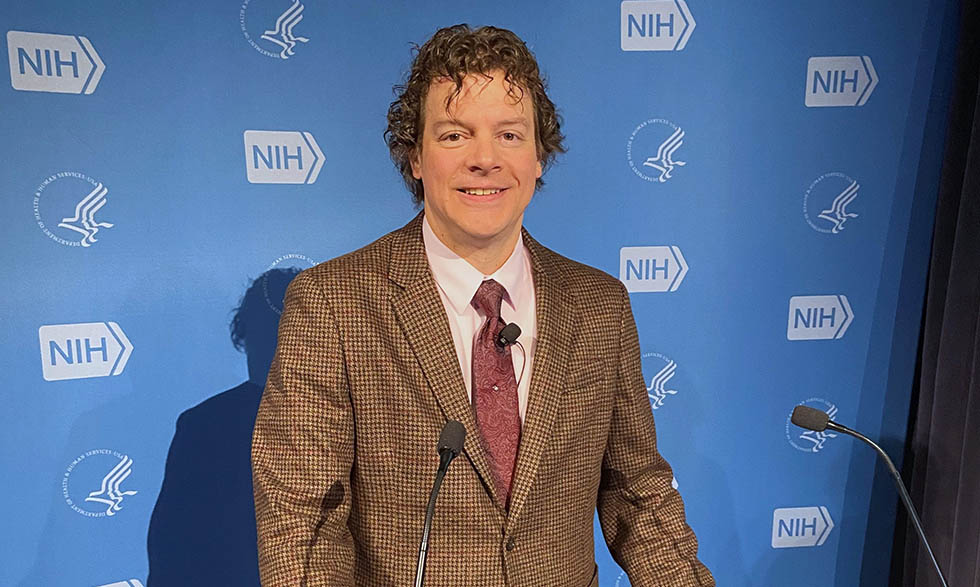In addition to researching joint and bone health in young athletes, the National Institute of Arthritis and Musculoskeletal and Skin Diseases (NIAMS) also studies specific joint conditions in young people.
One of those conditions, juvenile idiopathic arthritis (JIA), is the most common form of arthritis in children and teens. In some forms of JIA, the body's immune system mistakenly attacks some of its own healthy cells and tissues, resulting in joint swelling, pain, stiffness, and loss of motion.
"To succeed, we must examine large populations of people with systemic juvenile idiopathic arthritis."
– Michael Ombrello, M.D.
There are several types of JIA, each with distinct features. Right now, scientists don't fully understand why certain kids get JIA.
That's where researchers at NIAMS come in.
Michael Ombrello, M.D., is a principal investigator at NIAMS who is leading a study to better understand a rare form of JIA known as systemic juvenile idiopathic arthritis (sJIA) and related conditions. The primary goal of this research is to understand the causes and improve treatments for children and adults with the disease.
The study, which started in 2018, seeks to involve over 1,000 participants.
"To succeed, we must examine large populations of people with systemic juvenile idiopathic arthritis," Dr. Ombrello notes.
Participants share their medical history with researchers and go through a series of exams. Researchers might take pictures of their skin and joints, as well as X-rays and biopsies. Some family members of the participants may be asked to give blood or saliva samples.
The researchers will use those for genetic testing, which could reveal genetic factors that contribute to the disease.
"My team's motivation comes from the severe nature of sJIA, which drives us to overcome the challenges of translational research [research in which scientists, health care providers, and other experts work together]," Dr. Ombrello says.
He hopes to use what the team learns to create more personalized treatment for kids who have the disease.







